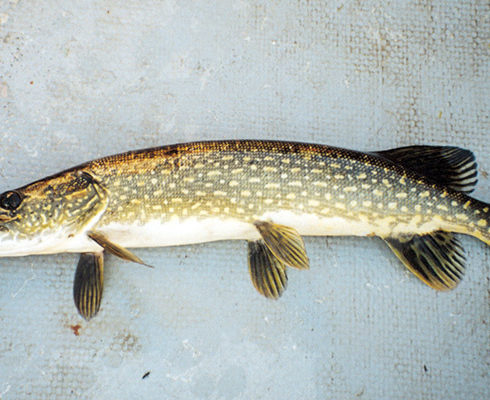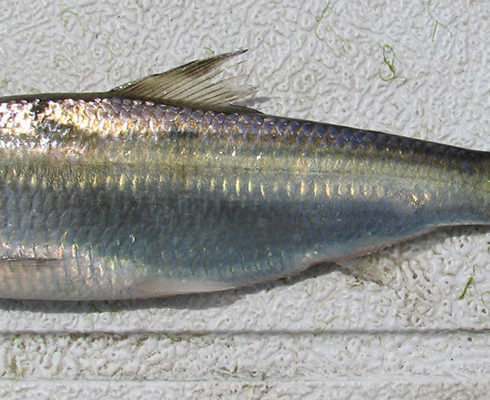Sound science provides innovative solution
UPM Pulp received initial environmental authorization from Uruguayan regulators through in-depth research and engaged communication
First it is understanding the issue. Second, and arguably the more difficult part, is communication.
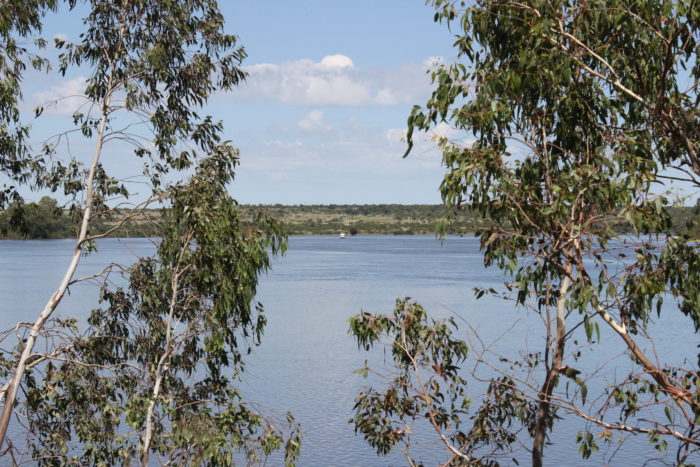 A parakeet's view - peeking through eucalyptus at the sediment sampling crew.
A parakeet's view - peeking through eucalyptus at the sediment sampling crew.
Finland-based UPM Pulp will construct a 2.1-million-tonne greenfield eucalyptus pulp mill near Paso de los Toros in Central Uruguay. The government wants them to build the mill too, as it will boost the local economy. Win-win, right?
Not so fast. First, UPM Pulp needed an environmental authorization from the Uruguayan regulators, and to achieve that, they needed to understand if it’s possible to build in that location without negatively impacting one of Uruguay’s most important rivers – the Río Negro.
This was trickier than it sounds. The river is already compromised by algal blooms due to hydroelectric dams and elevated levels of phosphorous in the water.
UPM Pulp sought help, so, they hired Mississauga, Ontario-based environmental consultancy Ecometrix. “Uruguay has very good environmental laws and knowledgeable environmental regulators,” explains Bruce Rodgers, CEO and Senior Environmental Engineer at Ecometrix. “The government laid out the terms of reference that the company had to meet, and then UPM reached out to us, saying: ‘This is what the government has asked us to do. Can you help?’”
The process Ecometrix followed didn’t start with the government’s terms of reference. Instead, the environmental consulting team took time to understand the challenge. They knew that a company previously investigated the same area for development of a pulp mill but ultimately decided it wasn’t feasible. So, why would this investigation conclude differently?
Rodgers explains “our approach to complex environmental challenges is guided by, what we call, Environmental Intelligence. It consists of four principles – thought, application, solution and communication.”
Learn more about the TASC approach
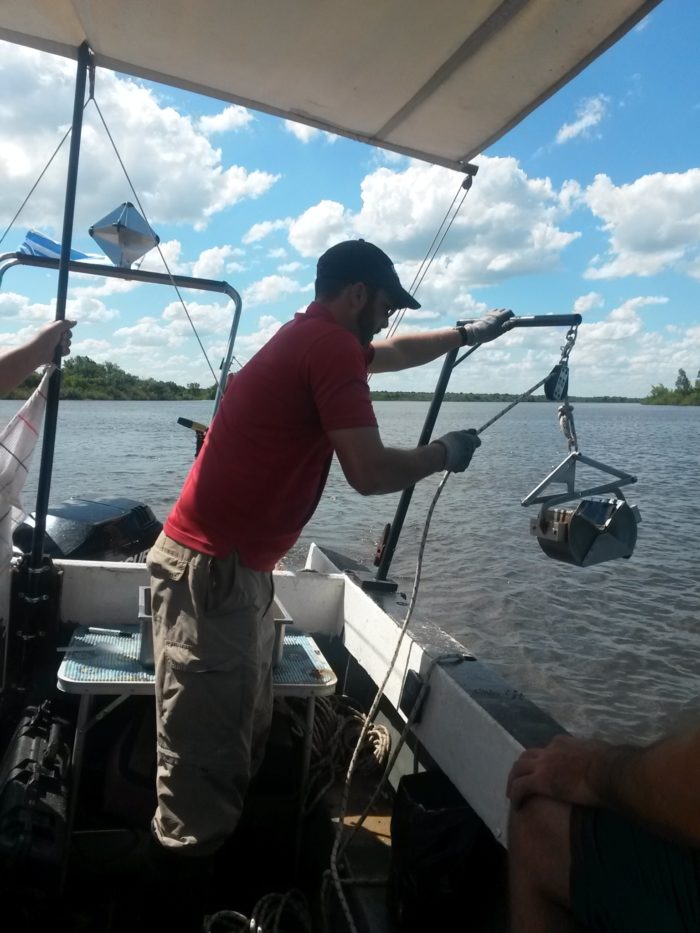 The ponar sediment sampler is lowered to the bottom.
The ponar sediment sampler is lowered to the bottom.
Understand the challenge
Before getting underway, Ecometrix took time to discover all relevant elements of the project that could potentially impact the outcome. This first stage is essentially a deep dive into understanding the nature of the issue and what needs to be done.
“Through this process, we made two observations,” explains Rodgers. “First, all previous investigators collected valuable data but none conducted a thorough analysis. Second, the terms of reference did not include time for open face-to-face discussion. These are essential components of a successful outcome.”
A different approach was required to achieve the goal. Additional analyses were required to better understand why the waters of the river were compromised. And, open dialogue with the regulatory authority was needed to build trust and to ensure a common understanding of the objectives, approach and findings.
A dive into detail
Einstein once said “look deep into nature, and then you will understand everything better.”
This is what was required to achieve the goal – a better understanding of the complexities of the system through a deep dive into the detail.
For more than a decade, investigators collected data and other relevant information. These data characterize the nature of the Río Negro, but data alone do not provide understanding. Analysis provides understanding.
“This is where we excel,” explains Rodgers. “Our team of scientists and engineers analyze data, find patterns and relationships, and build mathematical models to explain what we see. Through this process, we unravel the complexity of the system, and then learn how to manage it.”
For the Río Negro, the complexity stemmed from the relationship between algal growth, nutrient loadings and water management.
Previous investigators recognized that the observed algal blooms were attributed to nutrient loadings to the river, but they focused on phosphorus, not nitrogen, and did not consider its relationship with flow. An analysis of the data showed the relationship between organic and inorganic forms of nutrient that implicated nitrogen as the limiting nutrient for growth, not phosphorus. But the relationship to flow was far more complicated.
The flow of water in the Río Negro is managed for the primary purpose of generating hydroelectricity. When electricity is required, water is released from the dams, otherwise it is stored. Analysis of flow records showed prolonged periods of limited flow extending days, weeks, even months. These extended periods of limited flow create the perfect conditions for algae to grow.
“To resolve this complexity, we built mathematical models to represent the water balance and chemical balance within the river,” explains Rodgers. “These models could then be used to better understand the relationships between flow, nutrients and algal growth.”
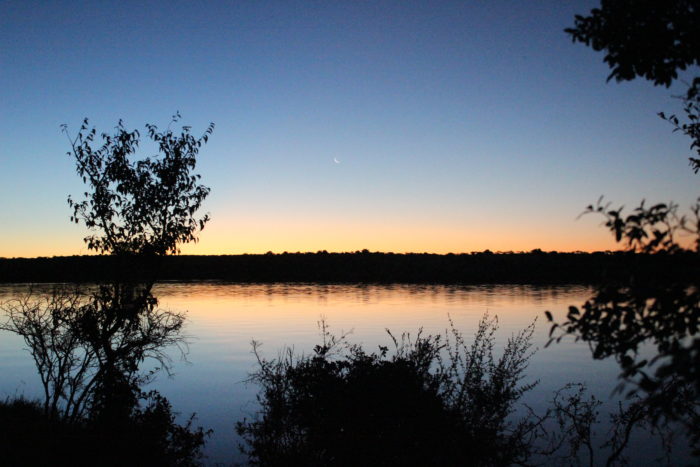 The sun sets on the Rio Negro, soon the fish crew will depart to set nets to better understand the nocturnal fish community in the project area.
The sun sets on the Rio Negro, soon the fish crew will depart to set nets to better understand the nocturnal fish community in the project area.
A mitigation strategy
Armed with a new found understanding, Ecometrix was able to recommend a solution.
The research team discovered it was possible to apply a minimum flow on the river in such a way that it wouldn’t impede the ability to produce hydro power. There would still be enough water to meet the demands for hydro, but there would also be enough water released to keep the river flowing, meeting environmental needs as well.
After six months of technical research and six months of discussion with local authorities, this solution ultimately became the mitigation strategy to overcome the potential effect of the pulp mill.
More than science
Finding a solution to address the Río Negro’s environmental woes and ultimately help UPM achieve their goal required much more business acumen than a few field studies and a mathematical model. It required excellent communication and foresight. This is where the “C” in Ecometrix’s four-step approach comes in.
But effective communication requires listening as much, or more so, than talking.
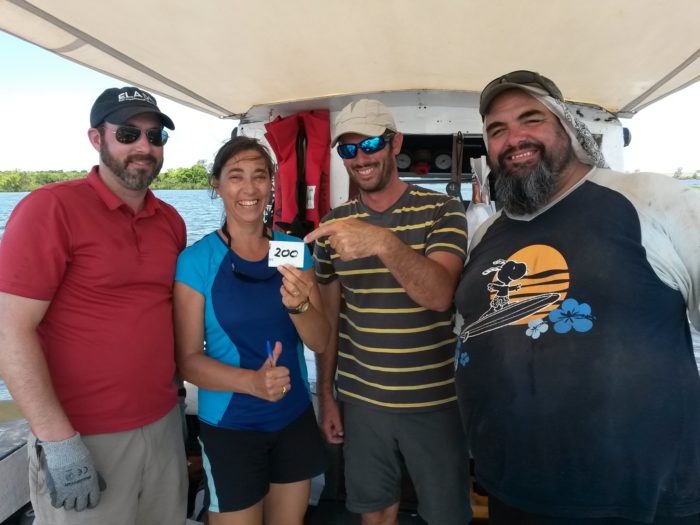 Ecometrix and LATU researchers take an impromptu photo to celebrate the 200th sediment sample taken.
Ecometrix and LATU researchers take an impromptu photo to celebrate the 200th sediment sample taken.
There was a lot at stake with this project. The regulatory authority had concerns. Others who tried before concluded it couldn’t be done. The regulatory authority had to be sure they were making the right decision based on the correct analysis.
“The process of building trust and understanding takes time,” says Rodgers. “We initially tried to communicate remotely, but this proved ineffective. So, we met face-to-face a week at a time to ensure a common understanding.”
Through this process, the scope of work evolved, and with each iteration the analysis grew stronger and more defensible. “The regulatory authority sought further validation of the mathematical model,” explains Rodgers, “so we secured satellite images to digitally analyze the spatial and temporal distributions of algal blooms throughout the Río Negro. We also conducted additional field work and extended the analysis to address specific questions, all of which helped build trust and understanding.”
Achieving the best outcome for all parties across different nations, languages and environmental objectives would not have been possible without a deep understanding of the situation, innovative environmental science, and the business acumen to communicate with all parties involved. The end result is that UPM is one step closer to building its mill. The Uruguayan government is one step closer to an economic boost. And, the Río Negro is one step closer to being managed with environmental outcomes in mind.
The science behind the solution
Leveraging a combination of existing NASA research and detailed fieldwork, Ecometrix built a mathematical model that predicted algal growth in the river and outlined a mitigation strategy that helped a power utility and a future pulp mill effectively share the river while also improving its ecological state.
Here’s more detail on the science involved:
Mathematical Model
Ecometrix created a mathematical model to predict algal growth in the river. The model works by looking at all the nutrient cycles and how they affect algal growth – phosphorous, nitrogen, carbon, dissolved oxygen – and then once the model was in place, they were able to use it to predict how a pulp mill would affect the river. From there, they were able to make further predictions on the impact once the water flow is regulated. By using this tool, Ecometrix recommended a minimum flow to be applies to the hydro facility.
NASA Satellite Images
Leveraging NASA satellites orbiting the earth daily, scanning and collecting enormous amounts of information, Ecometrix identified the frequency, distribution and density of algal growth within the related reservoirs. Using that information, they helped local authorities build trust and confidence in the mathematical model. With the satellite images, Ecometrix was able to get 10 years of daily/weekly estimates or actual measures of amounts of algae growing in the reservoir.
Field Testing
The third research tactic was boots-on-the-ground fieldwork, or perhaps more accurately boots in the boat. Ecometrix sent one of its experts in the area of aquatic ecology out into the field with a research group from Uruguay called LATU. They undertook two field programs looking at netting of fish to discover what types of fish, sediments, substrates and organisms live in the river.

